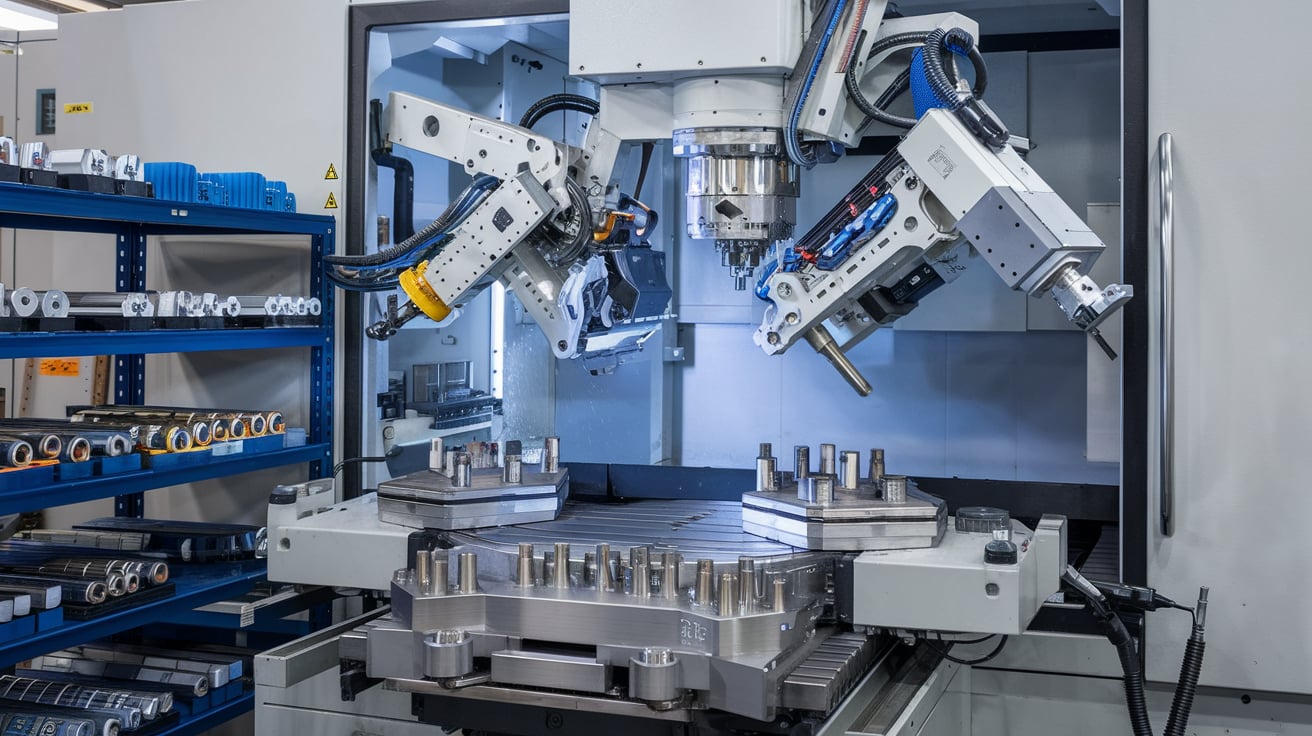In today’s highly competitive manufacturing landscape, the demand for intricate, high-precision components is at an all-time high. Industries like aerospace, automotive, medical, and energy rely on cutting-edge technology to push the boundaries of innovation. Enter multi-axis five-axis machining—a game-changer that transforms how we design and produce complex parts.
What Is Five-Axis Machining?
At its core, five-axis machining refers to a CNC (Computer Numerical Control) system that moves a tool or part along five different axes simultaneously. While traditional three-axis machines operate along the X, Y, and Z axes, five-axis machines introduce two additional rotational axes (often labelled A and B). This added flexibility allows the tool to approach the workpiece from virtually any angle, enabling intricate geometries that would be impossible or inefficient with simpler setups.

Why Multi-Axis Matters
The “multi-axis” capability enhances five-axis machining by integrating advanced kinematics, tool path optimization, and dynamic movement control. This combination ensures higher precision, faster production cycles, and reduced waste. The benefits of multi-axis five-axis machining are particularly compelling for manufacturers looking to achieve:
1. Unmatched Geometric Complexity: Intricate designs like turbine blades, medical implants, and complex molds become feasible without the need for extensive manual finishing.
2. Improved Surface Finish: The additional axes enable smoother transitions and better tool alignment, reducing the need for secondary processes like polishing.
3. Greater Efficiency: By eliminating multiple setups and allowing machining in a single operation, manufacturers can save time and minimize errors.
4. Material Savings: Precision reduces scrap rates, which is critical when working with expensive materials like titanium or Inconel.
Applications Across Industries
Aerospace: Five-axis machining is indispensable for producing lightweight yet durable components such as turbine blades, wing spars, and structural brackets. Its precision ensures these parts meet the strict safety and performance standards of the aerospace industry.
Automotive: The automotive sector benefits from the technology’s ability to produce high-performance engine components, suspension systems, and transmission parts with exceptional accuracy.
Medical: For implants and surgical tools, precision is paramount. Five-axis machining enables the production of complex shapes, like custom hip replacements or dental implants, tailored to individual patients.
Energy: In industries such as oil and gas or renewable energy, the ability to produce robust, intricate components like impellers and pump housings is vital for ensuring operational efficiency and durability.
Overcoming Common Challenges
Despite its many advantages, multi-axis five-axis machining comes with its challenges. Understanding and addressing these obstacles is key for businesses seeking to integrate this technology:
l High Initial Investment: The advanced machinery and software required for five-axis machining can be costly. However, the long-term savings in time and materials often justify the upfront expense.
l Complex Programming: Crafting precise tool paths for multi-axis systems demands skilled programmers and sophisticated CAM (Computer-Aided Manufacturing) software.
l Steep Learning Curve: Operators and engineers need thorough training to fully leverage the machine’s capabilities.
Choosing the Right Five-Axis Machine
When selecting a multi-axis five-axis machining system, consider the following factors:
1. Machine Type: Options include trunnion-style, swivel head, and hybrid machines. Each has unique advantages depending on your specific applications.
2. Spindle Speed and Power: Ensure the machine can handle the materials and tolerances required for your projects.
3. Software Integration: Advanced CAM software with simulation capabilities is crucial for error-free programming.
4. Support and Training: Partner with manufacturers or vendors that provide comprehensive training and ongoing support.
Future of Multi-Axis Five-Axis Machining
As industries evolve, so does machining technology. Automation, AI-driven tool path optimization, and additive manufacturing integration are on the horizon, further enhancing the capabilities of multi-axis and five-axis machining. The combination of these technologies promises even greater precision, speed, and cost efficiency.
Final Thoughts
For manufacturers looking to stay ahead in a rapidly advancing market, investing in multi-axis five-axis machining is more than a choice—it’s a necessity. By unlocking new possibilities in precision and complexity, this technology empowers businesses to innovate and thrive in ways previously unimaginable.
Whether you’re an engineer exploring cutting-edge solutions or a business owner seeking competitive advantages, the potential of multi-axis five-axis machining is undeniable. The future of manufacturing is here—and it’s moving in five dimensions.